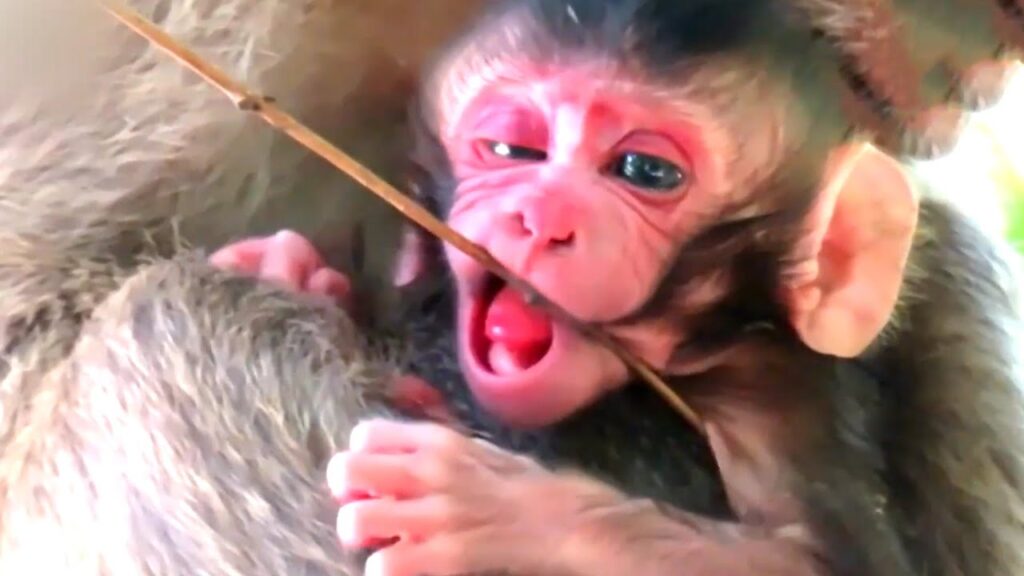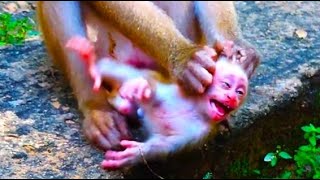
In a quiet corner of the sanctuary, the newborn baby monkey lies curled on a patch of dusty ground, eyes half-open and breathing softly. Everything about the little one looks fragile — the thin arms, the trembling fingers, and the tender skin still wrinkled from birth. Yet, the most striking sight isn’t the baby’s innocence but a thin, dry twig resting across its tiny face. It lies diagonally, from the forehead to the cheek, as if nature herself had placed it there to mark this little creature’s humble beginning.
The twig moves slightly each time the baby breathes, brushing the fur gently, almost like a mother’s touch. Mom Libby sits nearby, watching her infant with deep concern. She seems torn between curiosity and caution — unsure if the stick is a harmless thing or another sign of her baby’s weakness. Slowly, she reaches out, using her rough but careful fingers to nudge it aside. The moment it rolls away, the baby stirs, making a faint squeak that echoes through the trees.
The air feels heavy with tenderness. A simple twig — something most would ignore — has become a powerful symbol of this tiny life’s first struggle. Dust clings to the baby’s fur, and Libby tries her best to clean it, licking gently around the eyes and nose. Her movements are awkward but full of care.
As the sun filters through the leaves, a small beam of light falls exactly where the twig had rested, illuminating the baby’s face. For a fleeting moment, it looks like a blessing — a quiet reminder that even the smallest creatures, marked by the simplest things, carry stories of strength, survival, and love in the heart of the wild.


